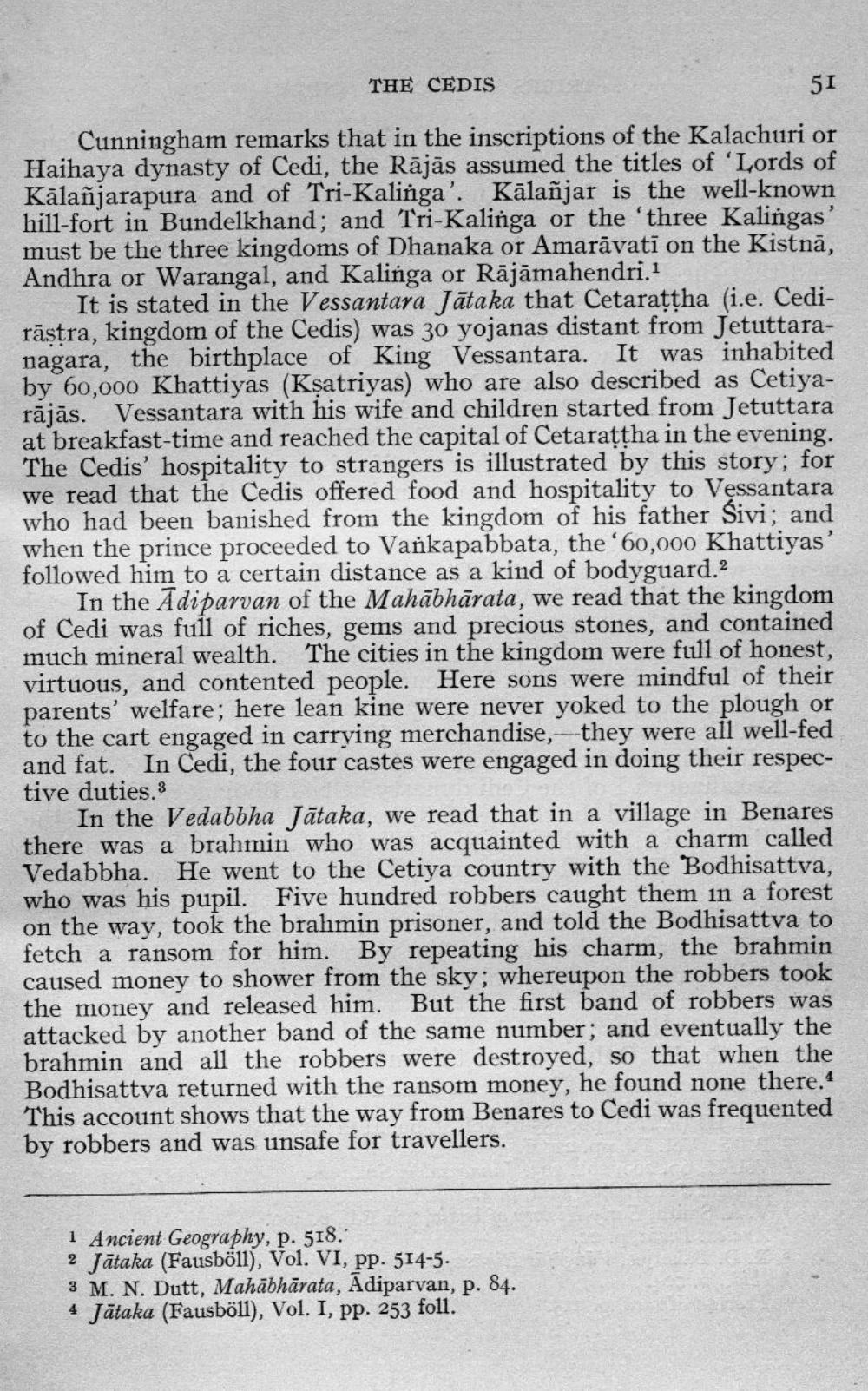________________
THE CEDIS
51
Cunningham remarks that in the inscriptions of the Kalachuri or Haihaya dynasty of Cedi, the Rājās assumed the titles of 'Lords of Kalañjarapura and of Tri-Kalinga'. Kālañjar is the well-known hill-fort in Bundelkhand; and Tri-Kalinga or the 'three Kalingas' must be the three kingdoms of Dhanaka or Amaravati on the Kistnā, Andhra or Warangal, and Kalinga or Rajamahendri.1
It is stated in the Vessantara Jataka that Cetaraṭṭha (i.e. Cedirästra, kingdom of the Cedis) was 30 yojanas distant from Jetuttaranagara, the birthplace of King Vessantara. It was inhabited by 60,000 Khattiyas (Kṣatriyas) who are also described as Cetiyarājās. Vessantara with his wife and children started from Jetuttara at breakfast-time and reached the capital of Cetaraṭṭha in the evening. The Cedis' hospitality to strangers is illustrated by this story; for we read that the Cedis offered food and hospitality to Vessantara who had been banished from the kingdom of his father Sivi; and when the prince proceeded to Vankapabbata, the '60,000 Khattiyas' followed him to a certain distance as a kind of bodyguard.2
In the Adiparvan of the Mahabharata, we read that the kingdom of Cedi was full of riches, gems and precious stones, and contained much mineral wealth. The cities in the kingdom were full of honest, virtuous, and contented people. Here sons were mindful of their parents' welfare; here lean kine were never yoked to the plough or to the cart engaged in carrying merchandise, they were all well-fed and fat. In Cedi, the four castes were engaged in doing their respective duties.3
In the Vedabbha Jataka, we read that in a village in Benares there was a brahmin who was acquainted with a charm called Vedabbha. He went to the Cetiya country with the Bodhisattva, who was his pupil. Five hundred robbers caught them in a forest on the way, took the brahmin prisoner, and told the Bodhisattva to fetch a ransom for him. By repeating his charm, the brahmin caused money to shower from the sky; whereupon the robbers took the money and released him. But the first band of robbers was attacked by another band of the same number; and eventually the brahmin and all the robbers were destroyed, so that when the Bodhisattva returned with the ransom money, he found none there.4 This account shows that the way from Benares to Cedi was frequented by robbers and was unsafe for travellers.
1 Ancient Geography, p. 518.
2 Jātaka (Fausböll), Vol. VI, pp. 514-5.
3 M. N. Dutt, Mahabharata, Adiparvan, p. 84.
* Jātaka (Fausböll), Vol. I, pp. 253 foll.




